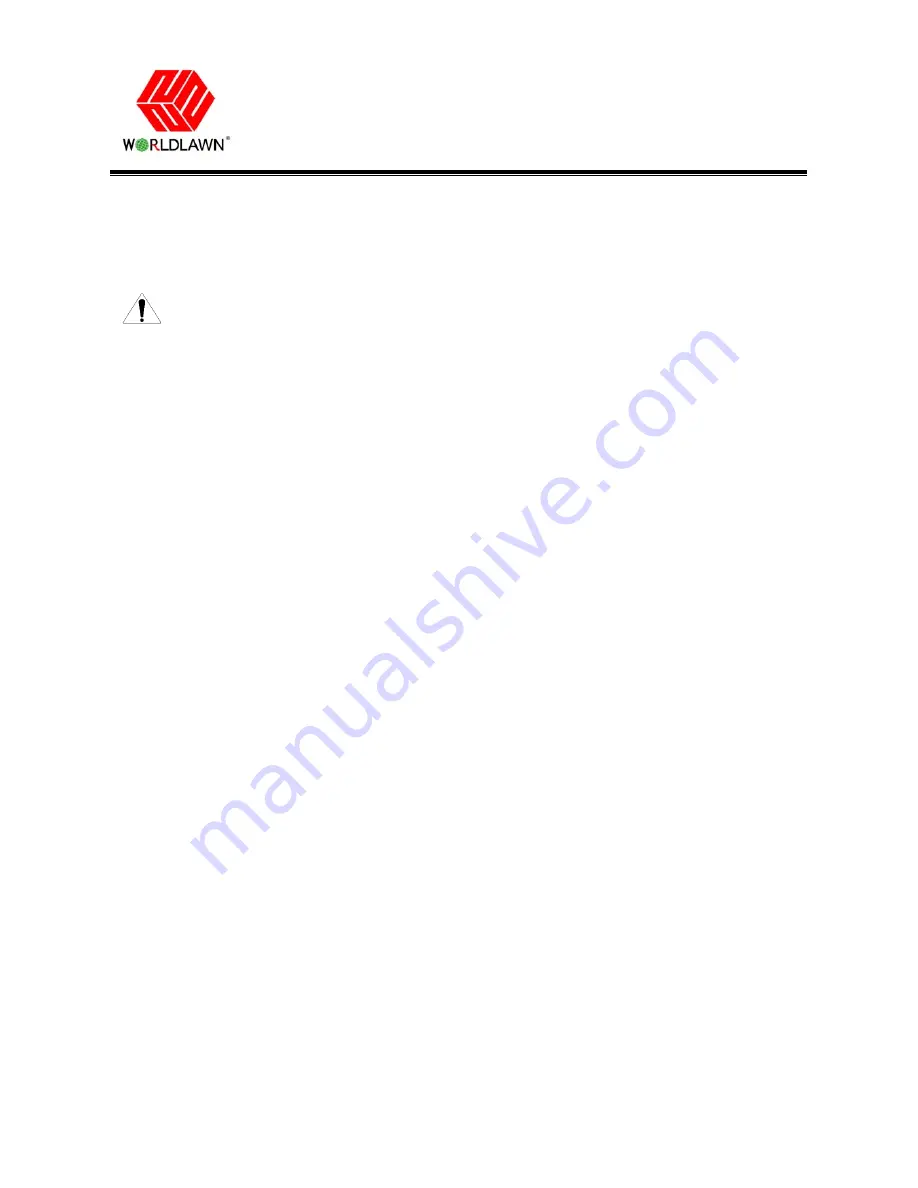
1
1. Safety Information
1.1 Before Operating
Read and understand the contents of this manual
before operating the snow thrower.
This is the safety alert symbol. It is used to
alert you to potential personal injury hazards.
Obey all safety messages that follow this symbol to
avoid possible injury or death.
Improperly using or maintaining this snowthrower
could result in injury or death. To reduce this
potential hazard, comply with the following safety
instructions.
This snow thrower is capable of amputating hands
and feet and of throwing objects. Failure to
observe the following safety instructions could
result in serious injury.
1.2 Training
1.2.1
Regard the snow thrower as a piece of power
equipment and the operator needs to be trained before
operating this unit.
1.2.2
Read and follow all instructions on the machine
and in the manual(s). Be thoroughly familiar with
controls and the proper use of the equipment. Know
how to stop the unit and disengage the controls.
1.2.3
Never allow children, teenagers, or adults to
operate the equipment without proper instruction.
1.2.4
Keep everyone, especially children and pets,
away from the area of operation. Remember that the
operator or user is responsible for accidents or hazards
occurring to other people or their property.
1.2.5
Exercise caution to avoid slipping or falling,
especially when operating the snow thrower in
reverse.
1.3 Preparation
1.3.1
Thoroughly inspect the area where the
equipment is to be used and remove all wires, blocks
and any other foreign objects.
1.3.2
Put the clutch and shifts into neutral before
starting the engine.
1.3.3
Avoid wearing loose fitting clothing that can get
caught in moving parts. Wear footwear that will
improve footing on slippery surfaces.
1.3.4
Handle fuel with care; it is highly flammable.
z
Use an approved fuel container.
z
Never add fuel to a running engine or hot engine.
z
Fill fuel tank outdoors with extreme care. Never
fill fuel tank indoors.
z
Never fill containers inside a vehicle or on a
truck or trailer bed, because interior carpets or
plastic truck bed liners may insulate the container
and slow the loss of any static charge.
z
Always place containers on the ground, away
from your vehicle, before filling.
z
When practical, remove gas-powered equipment
from the truck or trailer and refuel it on the
ground. If this is not possible, then refuel such
equipment on a trailer with a portable container,
rather than from a gasoline dispenser nozzle.
z
Keep the nozzle in contact with the rim of the
fuel tank or container opening at all times, until
refueling is complete.
z
Replace gasoline cap securely and wipe up
spilled fuel.
z
If fuel is spilled on clothing, change clothing
immediately.
1.3.5
Use extension cords and receptacles as specified
by the manufacturer for all units with electric starting
motors.
1.3.6
Adjust the collector housing height to clear
gravel or crushed rock surface.
1.3.7
Never attempt to make any adjustments while
the engine is running (except when specifically
recommended by manufacturer).
1.3.8
Always wear safety glasses or eye shields during
operation or while performing an adjustment or repair
to protect eyes from foreign objects that may be
thrown from the machine.
1.4 Operation
1.4.1
Do not put hands or feet near or under rotating







































